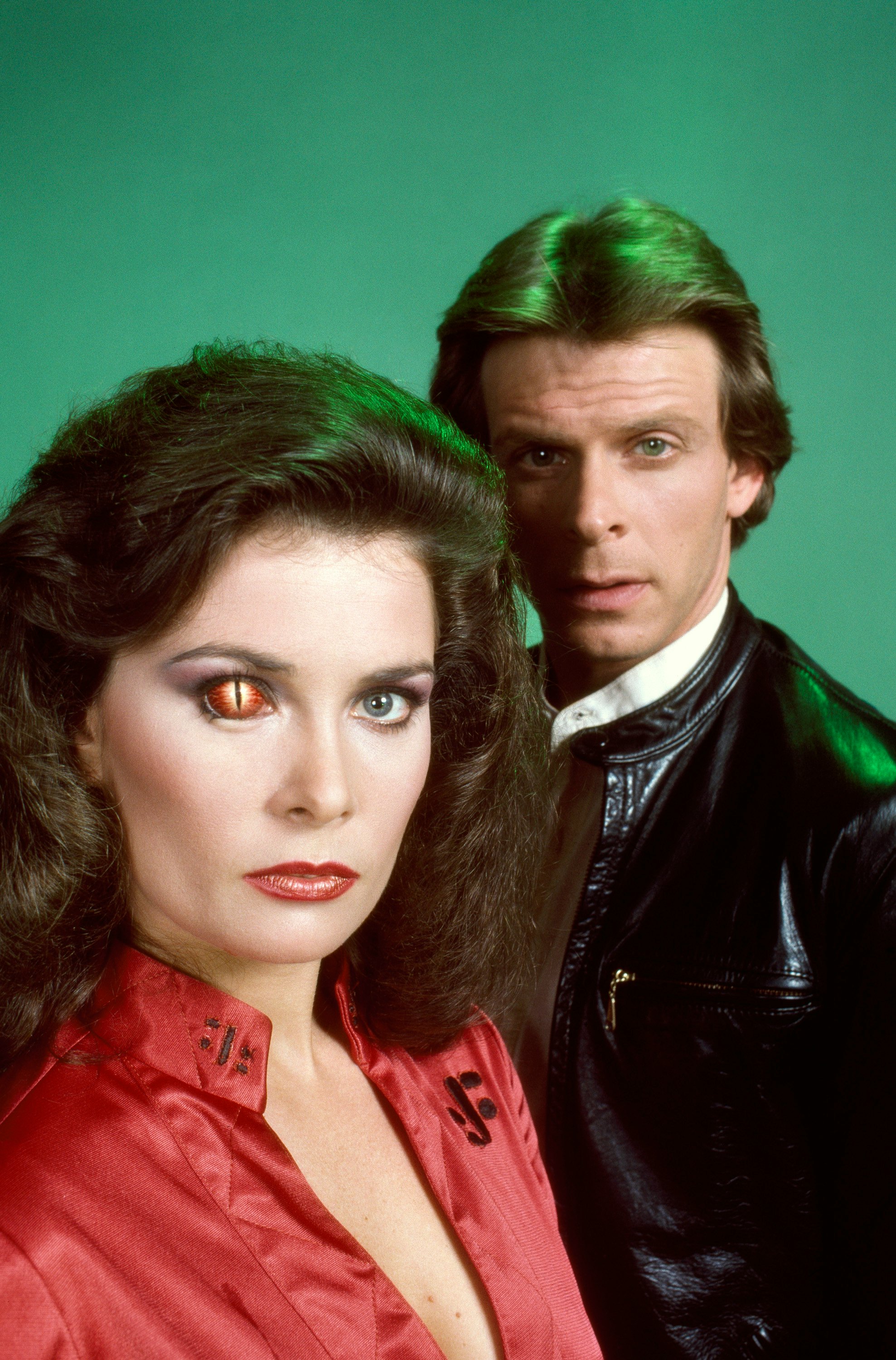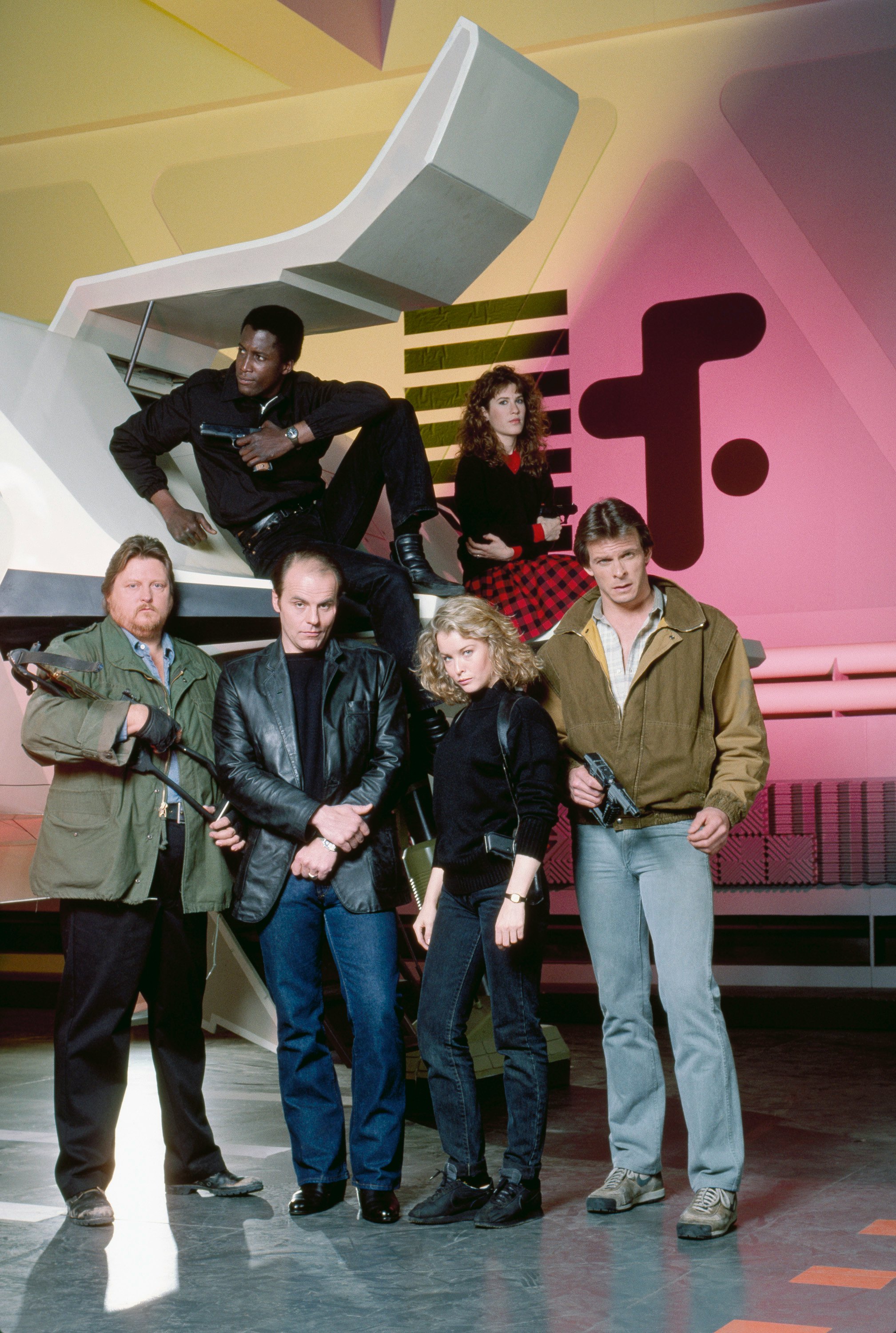
In 1983, one ambitious sci-fi miniseries dared to take a high-stakes interstellar conflict and set all the action on Earth. The result was the hit phenomenon, V, which was followed in May 1984 with V: The Final Battle. But then, something strange and ambitious happened, a move which many pundits of the time said was a mistake. The epic yet grounded story of V morphed from a miniseries into a full-blown weekly TV show. Beginning on October 26, 1984 V: The Series bravely carried on the story of what happens on Earth after the alien invasion has (supposedly) been thwarted.
While not a perfect show by any stretch of the imagination the themes in V: The Series feel wildly prescient today. Whether or not this version of V was entirely coherent isn’t the point because at least one of the themes embedded into this show is stronger and deeper than any Star Wars tale of freedom and rebellion.
Like the rebooted Battlestar Galactica two decades later, V: The Series relies on the continuity of events in the miniseries that preceded it. In the first V miniseries, a bunch of flying saucers roll up on Earth, and the apparently humanoid “Visitors” emerge in a kind of homage to the original version of The Day the Earth Stood Still. Diana (Jane Badler) is the most prominent leader of the Visitors and promises humanity the cure for various afflictions, including cancer. All the Visitors claim to want in return is some of Earth’s natural resources. However, we soon learn that the Visitors are really reptilian aliens and most of them have no desire to help humanity. The first miniseries and V: The Final Battle tell the tale of the Resistance eventually beating back the Visitors, which means the ensuing TV show opened with a very different premise than the more explosive backstory.
If you’ve never seen V or V: The Final Battle, the first episode of V: The Series does not hold your hand, reptilian or otherwise. We start as Diana escapes from one of the captured motherships and is pursued by Mike Donovan (Marc Singer). For those who are new to the world of V, the VFX on this show is a wonderful mixture of realistic (for the time) and also just a little bit camp (perhaps on purpose, perhaps not). The little shuttles that people can fly out of the motherships are super sweet looking from the outside and satisfy a post-Star Wars pew-pew aesthetic. In fact, in this opening sequence of the first episode, the believability gap isn’t in the spaceship action, but instead in the reactions the actors have to steering their ships. Facial expressions are everything in selling wild sci-fi action, and this is where V struggles. When you talk about what the show is and what it’s saying, it sounds incredible. But when you zoom in and watch an episode, it sometimes feels like what it was — a TV version of a movie miniseries with a smaller budget than its mothership.

V was created as an anti-fascist tale for the modern age and early in its developmental process didn’t even include the infamous flesh-eating alien reptiles. Kenneth Johnson, the creator of V, revealed in 2019 that the show was originally an homage to the novel It Can’t Happen Here, a book about how fascism could rise in a democratic country. The concept of the alien Visitors as those fascists was suggested by then-NBC vice president, Jeff Sagansky, who said, according to Johnson in a SyFy Wire interview, “How about aliens?”
The rest is alien allegorical history. While the more beloved two miniseries made a clear case for humans rebelling against the new Visitor overlords, V: The Series was tackling something a little more complex: How do you prevent a Visitor takeover or use of alien tech from screwing up society in more hidden ways?

Early in the series, former CIA agent Ham Tyler (played by genre legend Michael Ironside) discovers that biotech firm Science Frontiers is trying to figure out ways to capitalize on captured Visitor tech and sell it back to the public. This corruption of the tech industry and pharmaceuticals is nuanced and fascinating. Tyler used to be somebody who worked for the Resistance, but now that the Visitors are technically defeated, is it wrong for him to work for good old-fashioned human corruption? After all, didn’t the humans fight to win their freedom so they could preserve their way of life? In the debut episode, Elias Taylor (Michael Wright) is also chasing in on his status as a Resistance hero by running a restaurant and trying to sell personally branded sneakers.
While the various arcs throughout the season run the gamut from interesting to downright silly, this basic idea is what makes V: The Series such a worthy thought experiment. There is no status quo for humanity after beating back an alien invasion, but V: The Series suggests that how people would try to get things back to normal would contain even more drama and intrigue than the battle that preceded it. In 1984 V: The Series was making smart critiques about capitalism and faux-innovation, which served that capitalistic machine. Yes, aliens were the cause of it all, but V was smart enough to say that beating back the aliens wouldn't solve our problems. Not even a little bit.







